
Atalante-Revista de Estudios Cinematograficos
Scope & Guideline
Celebrating the Rich Tapestry of Visual Arts and Culture.
Introduction
Aims and Scopes
- Interdisciplinary Film Analysis:
The journal emphasizes an interdisciplinary approach, integrating perspectives from cultural studies, history, and sociology to analyze films and their impact on society. - Focus on Spanish Cinema:
A significant portion of the journal's content is dedicated to Spanish cinema, exploring its evolution, key figures, and thematic concerns, thus contributing to the understanding of Spanish cultural identity. - Thematic Exploration of Gender and Representation:
There is a consistent focus on gender studies, particularly regarding the representation of women in film and the complexities of female agency, desire, and identity. - Documentary and Non-Fiction Cinema:
The journal also highlights the significance of documentary filmmaking, exploring its narrative strategies and its role in reflecting social issues, particularly in agrarian and political contexts. - Emerging Technologies and Film:
Atalante engages with contemporary issues in cinema, such as the influence of digital technologies and interactive narratives, reflecting on how these innovations reshape cinematic experiences.
Trending and Emerging
- Documentary Innovations:
There is a growing interest in innovative documentary practices, particularly those that challenge traditional narrative structures and engage with pressing social issues such as migration and agrarian crises. - Gender Studies and Feminist Perspectives:
An increasing number of papers focus on gender studies, particularly the portrayal of women in film, reflecting a broader cultural movement towards feminist discourse and representation in cinema. - Interactive and Immersive Cinematic Experiences:
Emerging discussions around interactive and immersive cinema, including virtual reality and participatory narratives, signify a trend towards exploring how technology alters viewer engagement. - Cinematic Representation of Urban Spaces:
Analysis of urban spaces, especially cities like Madrid, has become more pronounced, examining how these settings influence narrative and identity in contemporary cinema. - Transnational and Postcolonial Perspectives:
A notable trend towards transnational and postcolonial perspectives indicates a shift in focus towards understanding how global dynamics shape local narratives and cinematic expressions.
Declining or Waning
- Traditional Film Noir Analysis:
There appears to be less frequent exploration of classic film noir tropes and their applications in contemporary cinema, suggesting a waning interest in this genre as a standalone focus. - Historical Documentaries:
The analysis of historical documentaries, particularly those focusing on earlier periods of cinema, has decreased, possibly as attention shifts towards contemporary narratives and their implications. - National Cinema Discourses:
There has been a noticeable decline in articles focused solely on national cinema discourses outside of Spain, indicating a narrowing of scope towards more localized studies. - Conventional Genre Studies:
The exploration of conventional genre studies, particularly in relation to mainstream cinematic forms, has seen a reduction, as the journal leans towards more innovative or subversive interpretations. - Static Representations of Identity:
Discussions around static representations of identity in cinema, particularly concerning race and ethnicity, have diminished, reflecting a potential shift towards more dynamic and intersectional analyses.
Similar Journals
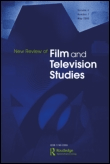
New Review of Film and Television Studies
Bridging Cultures Through Film and Television AnalysisNew Review of Film and Television Studies, published by Routledge Journals, Taylor & Francis Ltd, stands as a vital platform for scholars and practitioners engaged in the dynamic fields of film and television studies within the United Kingdom. This journal, which has been in circulation since 2010 and will continue through 2024, provides a rigorous academic forum for contemporary research, critical analysis, and innovative discourse surrounding visual storytelling. With an impressive Scopus rank placing it in the 66th percentile for Visual Arts and Performing Arts, and a respectable Q2 categorization, the journal fosters an interdisciplinary approach, bridging communication and cultural studies. While the journal does not currently operate under an open access model, it remains an invaluable resource for researchers, students, and professionals aiming to understand and influence the evolving landscape of film and television in our digital age. As it navigates the intersection of media and society, New Review of Film and Television Studies is essential reading for those looking to advance their knowledge and contribute to the ongoing scholarly conversation.

GOYA
Illuminating the Intersection of Art and CultureGOYA, published by the esteemed FUNDACION LAZARO GALDIANO, is a pivotal journal in the field of Visual Arts and Performing Arts. With an ISSN of 0017-2715, this Spanish journal serves as a critical platform for scholars, artists, and practitioners to engage with contemporary issues, trends, and methodologies in the arts. Since its inception, GOYA has strived to illuminate the intersection of artistic expression and cultural discourse, with coverage spanning from 2002 to 2024. The journal proudly holds a Q3 category ranking in the 2023 Scopus assessments for its field, reflecting its respected position among peers, with a notable rank of #377 out of 667. Though it does not follow an Open Access model, GOYA continues to contribute significantly to the academic landscape, enabling a deeper understanding of artistic practices and their societal implications. Researchers and students alike will find the journal an invaluable resource for insights and inspiration within the dynamic realm of the arts.
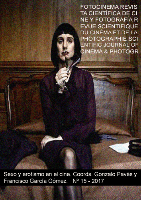
Fotocinema-Revista Cientifica de Cine y Fotografia
Exploring the Intersection of Visual Arts and SocietyFotocinema-Revista Cientifica de Cine y Fotografia is a leading open-access journal published by FOTOCINEMA since 2014, dedicated to the academic exploration of cinema and photography. Based in Spain, this journal serves as a vital platform for researchers, professionals, and students, fostering innovative discourse in the fields of Visual Arts, Performing Arts, and History. With an impressive Q2 rank in both History and Visual Arts, as well as a Q4 rank in Communication in 2023, Fotocinema reflects a commitment to high-quality scholarship, backed by Scopus rankings that highlight its growing influence within the academic community. By offering open access to its content, the journal ensures that significant research is available to a broader audience, encouraging collaboration and knowledge sharing across disciplines. As it continues its converged publication run from 2019 to 2024, Fotocinema stands at the forefront of cinematic and photographic studies, providing an essential resource for those dedicated to understanding the intricate relationships between visual media and society.

FILM QUARTERLY
Unveiling Insights in Film StudiesFilm Quarterly, published by University of California Press, stands as a leading academic journal in the field of visual arts and performing arts, boasting a prestigious Q1 ranking in the 2023 category quartiles. Since its inception in 1969, this quarterly publication has made significant contributions to the study and critique of cinema, attracting attention for its insightful articles, cutting-edge research, and comprehensive reviews that appeal to scholars, practitioners, and students alike. With an ISSN of 0015-1386 and an E-ISSN of 1533-8630, it serves as an essential resource for those seeking to enhance their understanding of film theory, history, and analysis. Although not open access, its articles are critical for researchers navigating the complex landscape of contemporary and historical film studies, underscoring its vital role in advancing scholarship within the discipline.
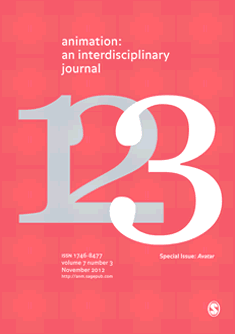
Animation-An Interdisciplinary Journal
Fostering Dialogue Across Visual and Performing ArtsAnimation: An Interdisciplinary Journal is a distinguished publication that explores the dynamic intersections of animation within the spheres of visual arts and performing arts. Published by SAGE Publications Inc in the United Kingdom, this journal has established itself as a significant platform for scholarly discourse, boasting a 2023 Scopus ranking that places it in the 79th percentile among a competitive cohort of arts and humanities journals. With a Q2 ranking in both Visual Arts and Performing Arts, the journal publishes innovative research that spans theoretical frameworks, technical advances, and cultural impacts of animation, fostering interdisciplinary collaboration and dialogue. Researchers, professionals, and students alike will find Animation an invaluable resource for understanding the evolving role of animation in contemporary society. Its comprehensive approach ensures that every edition contributes to the ongoing narrative of animation as a critical art form, making it essential reading for anyone invested in the future of animated media.
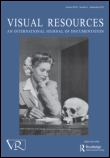
Visual Resources
Advancing Knowledge in Visual Culture and Museum PracticesVisual Resources, an esteemed journal published by Routledge Journals, Taylor & Francis Ltd, serves as a vital platform for scholarly research in the fields of Museology and Visual Arts and Performing Arts. With an ISSN of 0197-3762 and an E-ISSN of 1477-2809, this journal has navigated the academic landscape since its inception in 1980, continuing to amplify critical dialogues up to 2024. Positioning itself within category quartiles as Q3 for both museology and visual arts, the journal ranks at #302/667 in the Visual Arts and Performing Arts category and #41/83 in Museology according to Scopus, reflecting a significant yet competitive standing. Although not designated as Open Access, the publication remains accessible through institutional subscriptions, catering to a diverse audience of researchers, professionals, and students. By disseminating pioneering research and innovative methodologies pertinent to visual culture and museum practices, Visual Resources plays an indispensable role in advancing knowledge in its disciplines and connects academia with contemporary practice.

Quiroga-Revista de Patrimonio Iberoamericano
Advancing Knowledge in Cultural Preservation and Artistic ExpressionQuiroga-Revista de Patrimonio Iberoamericano, published by UNIV GRANADA, is a distinguished open-access journal dedicated to the fields of conservation, museology, and the visual and performing arts. Since its inception in 2012, the journal has provided a platform for scholars and practitioners to disseminate innovative research and critical discussions pertinent to Ibero-American heritage. With a growing impact, evidenced by its category quartiles ranking—Q3 in Conservation and Q2 in both Museology and Visual Arts and Performing Arts—as well as its Scopus rankings, Quiroga serves as an essential resource for researchers, professionals, and students who engage with the complexities of cultural preservation and artistic expression. The journal’s commitment to open access ensures the widespread availability of knowledge, fostering academic dialogue and collaboration within the global community. For inquiries, the journal can be reached at their offices located in Granada, Spain.
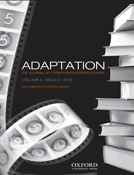
Adaptation-The Journal of Literature on Screen Studies
Advancing Understanding of Adaptation Across Media.Adaptation: The Journal of Literature on Screen Studies, published by Oxford University Press, stands at the forefront of interdisciplinary scholarship, blending the realms of literature, visual arts, and performing arts. This esteemed journal addresses the evolving relationship between literature and its adaptation into various screen formats, providing a vital platform for researchers, professionals, and students interested in the adaptation process across different media. With a commendable 2023 impact factor reflected by its recognition in the Q1 quartile categories for Literature and Literary Theory as well as Visual Arts and Performing Arts, it ranks in the top tiers of its field, showcasing its influence and reach. The journal is dedicated to exploring theoretical and practical approaches to adaptation, ensuring that voices from diverse perspectives are heard. Although it operates under traditional access models, the insights offered in its publications are invaluable for those looking to deepen their understanding of how literature translates into screen narratives. With coverage spanning from 2010 to 2024, Adaptation continues to be a pivotal reference point for innovative scholarship and critical discourse.

SIGHT AND SOUND
Illuminating Film's Impact on SocietySIGHT AND SOUND is a prestigious journal published by the British Film Institute, dedicated to the exploration of cinema and its cultural significance. With an ISSN of 0037-4806 and an E-ISSN matching the same, this journal has been a critical platform for film studies since its inception, contributing valuable insights to the realms of visual arts and performing arts. Despite its discontinuation in the Scopus database post-2021, SIGHT AND SOUND commands respect within its field, currently holding a Q3 rank among Visual Arts and Performing Arts journals. Operating from 21 Stephen Street, London W1P 1PL, England, it serves as a vital resource for researchers, professionals, and students looking to deepen their understanding of film theory, critique, and history. While access to its articles is not open, the journal continues to influence the discourse in film studies, making it a significant asset in academic and professional circles.

POSITIF
Transforming Perspectives in the Dynamic Arts CommunityPOSITIF is a distinguished journal, published by POSITIF EDITIONS, focusing on the dynamic fields of Visual Arts and Performing Arts. With ISSN 0048-4911, this journal has been a significant contributor to the arts community since its establishment in 2002, and it continues to captivate readers with its upcoming issues projected until 2024. Based in the heart of France at 12 RUE PIERRE ET MARIE CURIE, 75005 PARIS, POSITIF serves as an invaluable platform for researchers, professionals, and students alike, promoting innovative discourse and critical analysis within the arts. Despite holding a Q4 category ranking in the 2023 classification and a Scopus rank of 637/667, its commitment to enhancing the understanding and appreciation of visual and performing arts remains steadfast. Researchers are invited to contribute to this growing body of knowledge, enriching the journal's scope and impact in a vibrant artistic landscape.